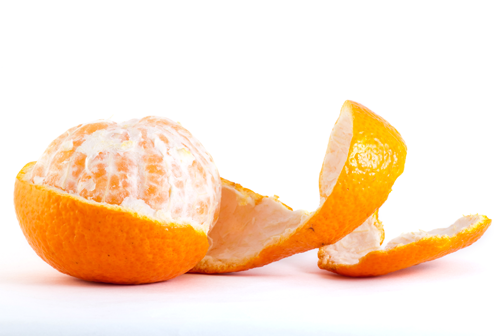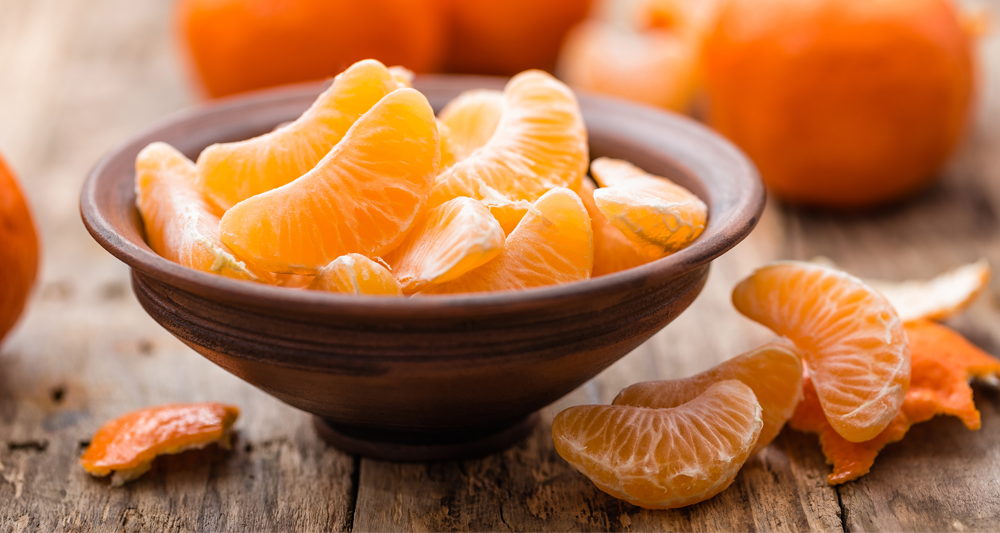What does a little orange that started its life in India have in common with the language spoken in China? Give up? They’re both named Mandarin!

Mandarin oranges are fruit, smaller versions of its big brother the orange. It’s small, but don’t underestimate it. The mandarin packs plenty of punch!
Mandarin oranges have a big family with lots of cousins. All the varieties are seedless, easy to peel, fun to eat, juicy and delicious. When the original mandarin migrated from India to China and ultimately to Tangier, it was renamed tangerine.
Clementines, another version of the mandarin, are found under brand names like “Sweeties” or “Cuties”. And the mandarin variety known as Satsuma, native to Japan, is grown from Louisiana to California. Satsumas are more resistant to cold and have a thicker skin that makes them easier to peel.
Mandarins are harvested during the winter and sold fresh usually until late February. Canned mandarins are available year-round. They’re used in salads and can be eaten right out of the can. The sweet little orange bombs are also used to flavor candy, bubble gum and even ice cream. Mandarin peels contain oils used in the perfume and beauty industries. Mandarins are low in calories, high in carbs and a great source of vitamins A, B and C. But the health benefits of mandarins don’t stop with vitamins.
Research has revealed that the carotenoids beta-carotene, lutein, and zeaxanthin in mandarins are antioxidants that build and support a healthy immune system. The high beta cryptoxanthin content of mandarin juice is beneficial to patients with hepatitis C. The limonene in mandarins aids in preventing breast cancer.
There are high levels of calcium, phosphorus, potassium and magnesium in mandarins. These help build bone strength, create new bone, fight osteoporosis and help control blood pressure. And mandarins produce a natural decongestant known as synephrine. Stop that stuffy nose during cold season! Throw away the Sudafed® and eat a mandarin orange!
Synephrine in mandarins is also useful in lowering levels of bad cholesterol. It combats the free radicals that oxidize cholesterol and cause it to adhere to artery walls. And the fiber in mandarins helps to prevent cholesterol absorption in the gut.
Want to lose a few pounds and look younger? Make mandarins a staple of your daily diet. The fiber content in mandarins will help you feel full longer. Plus, eating mandarins will lower your insulin levels, using insulin as fuel instead of storing it as fat. Regular intake of mandarin juice makes the skin glow and its antioxidants help protect from UVA rays to reduce skin wrinkles, lines and blemishes.
Wow! Who knew all those benefits were packed in that little orange package! Now let’s go shopping for our mandarins.
We want to find quality mandarins with no bruises or imperfections. The skin should be healthy with a glossy sheen. If you like your mandarins with lots of juice, pick the heavier ones. Avoid getting rotten mandarin by not selecting the soft or cut ones.
This winter do your body right. Stock up on the mighty mandarin orange and plan on eating two or three every day during the season.
